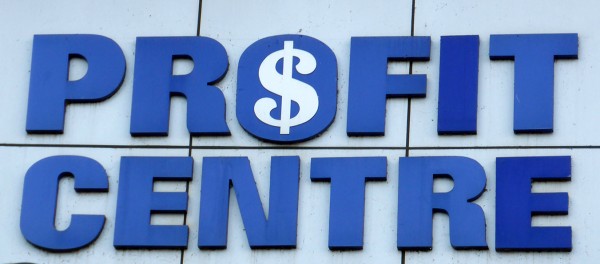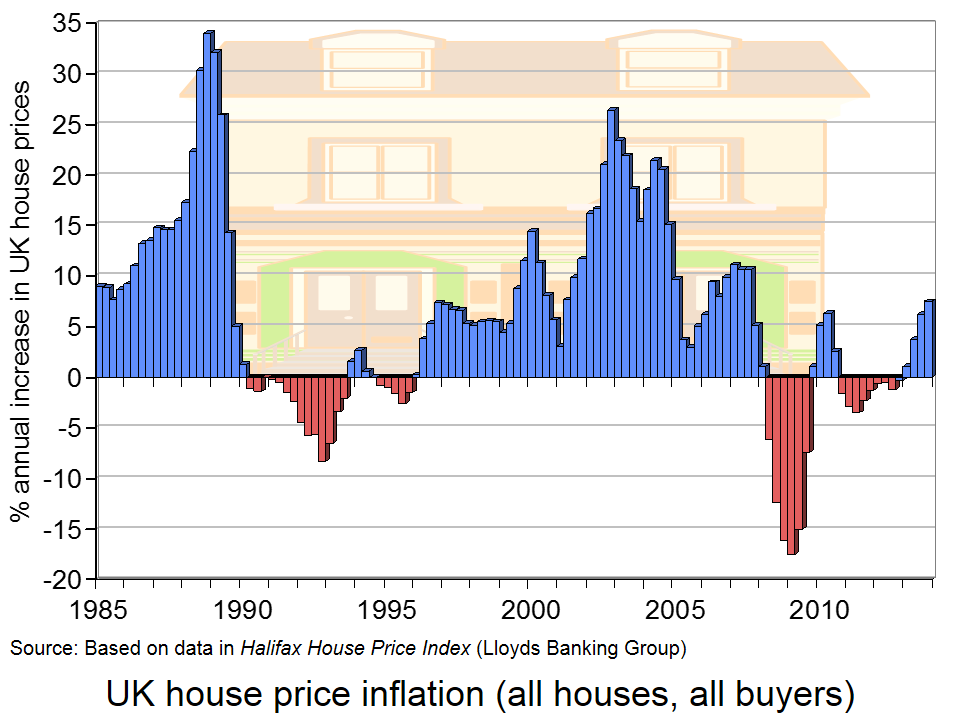 Business performance is always affected by the economy and we can always look at the economic theory to explain why profits rise and fall. Some companies prosper during recession, whereas others decline and the key is to understand the economics behind the data. This blog takes a look at the performance of a variety of companies and asks you to think about the economic theory behind it.
Business performance is always affected by the economy and we can always look at the economic theory to explain why profits rise and fall. Some companies prosper during recession, whereas others decline and the key is to understand the economics behind the data. This blog takes a look at the performance of a variety of companies and asks you to think about the economic theory behind it.
The world of betting has grown significantly and the profits of companies in this market, while certainly linked to economic performance, is also dependent on sport results. Paddy Power has announced pre-tax profits of €141m for 2013, an increase from €139.2m, despite sporting results causing profit performance to fall. On the part of football clubs, Liverpool FC saw a loss emerge for the 2012-2013 financial year, whereas Newcastle’s profits rose by 900% to £9.9m. What factors can explain the vastly different performance (off and on the pitch) of these two clubs?
In the USA, Radio Shack has been forced to close 1100 stores. This is, in part, as a response to a change in the way we are shopping. More and more consumers are purchasing goods online and Radio Shack is therefore experiencing growing competition from online retailers. Sales fell by 10% last year and even during the fourth quarter sales continued to decline.
Companies based in the largest economy in Europe have also experienced declines in performance, showing that a strong performing country doesn’t imply the same for companies operating in it. RWE, Germany’s biggest energy provider, has not made a loss since 1949. However, in 2013, this company posted its first annual loss in over 60 years: a loss of £2.28bn. With energy being in constant demand and criticism being levelled at UK energy providers for the high profits they’re making, the economics behind these data is important.
In better news for a company, Thorntons has boasted a significant increase in pre-tax profits, with much of this due to strong trading in the months leading up to Christmas and a sensible business strategy, involving selling more in supermarkets. Thorntons has cut its number of stores, but its profitable position has been saved by a good business strategy and this is going to lead to significant investment by the company.
Another strong performance was recorded by Berkshire Hathaway, an investment firm run by Warren Buffett. The company made a profit of £11.6bn in 2013, a significant increase on its 2012 performance. It is the insurance, rail and energy parts of the business that have contributed to the big increase in profits.
These are just some recent examples of data on business performance and your job is to think about the economic theory that can be used to explain the varying performance of different companies.
Liverpool announce annual loss of £50m in new club accounts Guardian, David Conn (4/3/14)
Thorntons makes biggest manufacturing investment for 25 years Telegraph, Natalie Thomas (3/3/14)
Thorntons cashes in on the snowman Independent, Simon Neville (3/3/14)
Warren Buffett’s Berkshire Hathaway sees record profit BBC News (2/3/14)
Newcastle says ‘player trading’ helped increase profits to £9.9m BBC Sport (25/2/14)
RWE posts first annual net loss for over 60 years BBC News (4/3/14)
UK among RWE woes as it posts first annual loss since 1949 The Telegraph, Denise Roland (4/3/14)
Germany’s RWE slides into €2.8bn net loss for 2013 Financial Times, Jeevan Vasagar (4/3/14)
John Menzies profits hit by drop in magazine sales BBC News (4/3/14)
Fresnillo profits drop as gold prices and production falls The Telegraph, Olivia Goldhill (4/3/14)
Glencore 2013 profit rises 20% as copper production gains Bloomberg, Jesse Riseborough (4/3/14)
Questions
- In each of the cases above, explain the economic theory that can be used to explain the performance of the respective company.
- To what extent is a change in the market structure of an industry a contributing factor to the change in company performance?
- To what extent do you think a company’s performance is dependent on the performance of the economy in which it operates?
- Are the profits of a company a good measure of success? What else could be used?
 The housing market is often a good indicator of the level of confidence in an economy. Prior to the credit crunch, there had been a house price bubble and as the financial crisis began and economies plunged into recession, house prices began to fall significantly. In the last few months, the housing market has begun its recovery and data from the ONS shows average property prices up by 5.4% across the UK in November, compared with a year earlier.
The housing market is often a good indicator of the level of confidence in an economy. Prior to the credit crunch, there had been a house price bubble and as the financial crisis began and economies plunged into recession, house prices began to fall significantly. In the last few months, the housing market has begun its recovery and data from the ONS shows average property prices up by 5.4% across the UK in November, compared with a year earlier.
When we analyse the housing market, or any market, we have to give attention to both demand-side and supply-side factors. It is the combination of these factors that yields the equilibrium price. For most people, buying a house will represent their single biggest expenditure and so there are many factors that need to be considered.
The demand for housing is affected by incomes, by the availability of mortgages, the rate of interest and hence the cost of mortgages. Speculation also tends to be a key factor that influences the demand for houses, as people may buy houses if they believe that prices will soon rise. Of course, simply by responding to expectations about future price changes causes the price changes to happen – a classic case of self-fulfilling speculation.
 The availability of mortgages has been one of the biggest factors increasing the demand for and hence price of houses in recent months. More individuals have been able to get onto the property ladder and, with confidence returning to the market, these factors have caused a rightward shift in the demand for owner-occupied houses.
The availability of mortgages has been one of the biggest factors increasing the demand for and hence price of houses in recent months. More individuals have been able to get onto the property ladder and, with confidence returning to the market, these factors have caused a rightward shift in the demand for owner-occupied houses.
Another key factor has been the growth in the demand for housing as an investment opportunity, in particular from the global super rich. This has been of particular concern in London, where there are fears of a housing bubble developing and of lower-income households being priced out of the market.
At the same time, there has been a growth in the supply or housing and thus a rightward shift of the supply curve. Ceteris paribus, this would push down average prices. However, the data suggest that house prices, especially in London, have increased, implying that the impact on price of the increase in demand has more than offset the downward force in prices from the increase in supply. Part of this can be explained by the demand-side factor of an increase in demand for top-end properties, which ‘has been distracting developers from the need for more affordable accommodation.’ When asked about the changes observed in the London housing market, Civitas said:
London is one of the most – if not the most – attractive property markets for international investors all over the world. It is also at the centre of an affordability crisis in the UK which is having serious consequences for younger people and the less well-off…For too many it [investment at the top end of the market] is providing financial shelter rather than human shelter.
With the upward pressure on house prices, many are now warning of another bubble developing in London. When comparing house prices in London with a Londoner’s income, Ernst and Young found that house prices were 11 times average annual income. Data like this were last seen prior to the financial crisis and it is this which has led to concerns of a post-crisis bubble.
There are suggestions that more action is needed to combat this bubble, such as imposing a limit in income multiples in relation to how much of a mortgage you are able to borrow. Another criticism levelled at the market is the government’s Help to Buy scheme, which critics argue is raising demand and pushing up prices, because there is no matched increase in supply.
So, with the rest of the market returning to some semblance of normality, it is currently just London showing signs of a bubble and we are all well aware of what the consequences might be if a bubble is allowed to grow and then eventually burst. The following articles consider the housing market.
Housing bubble forming in London, warns Ernst and Young BBC News (3/2/14)
London housing market shows new bubble sign – report Reuters, Andrew Winning (3/2/14)
Expert calls for stronger action to tame London housing bubble risks Independent (21/5/12)
London shows signs of house price ‘bubble’, experts warn The Telegraph, Scott Campbell (3/2/14)
Economic forecasters call for measures to cool down London’s property market The Guardian, Rupert Neate (3/2/14)
Think-tank calls for a ban on rich foreigners buying homes in London to puncture property bubble Mail Online, Lizzie Edmonds (2/2/14)
London property bubble to last until 2018 Sky News (3/2/14)
Questions
- What are the key factors that will affect (a) the demand for and (b) the supply of housing?
- Which factors explain why house prices in London have increased relative to prices across the country? Identify which factors are demand-side and which are supply-side.
- How has Help to Buy affected the housing market?
- What government policies could be implemented to ‘puncture’ the bubble?
- Why is a housing bubble a problem?
- Why has a house price bubble not emerged in the rest of the UK?
 I am an avid tennis fan and have spent many nights and in the last 10 days had many early mornings (3am), where I have been glued to the television, watching in particular Rafael Nadal in the Australian Open. Tennis is one of the biggest sports worldwide and generates huge amounts of revenue through ticket sales, clothing and other accessories, sponsorship, television rights and many other avenues. When I came across the BBC article linked below, I thought it would make an excellent blog!
I am an avid tennis fan and have spent many nights and in the last 10 days had many early mornings (3am), where I have been glued to the television, watching in particular Rafael Nadal in the Australian Open. Tennis is one of the biggest sports worldwide and generates huge amounts of revenue through ticket sales, clothing and other accessories, sponsorship, television rights and many other avenues. When I came across the BBC article linked below, I thought it would make an excellent blog!
There are many aspects of tennis (and of every other sport) that can be analysed from a Business and Economics stance. With the cost of living having increased faster than wages, real disposable income for many households is at an all-time low. Furthermore, we have so many choices today in terms of what we do – the entertainment industry has never been so diverse. This means that every form of entertainment, be it sport, music, cinema, books or computer games, is in competition. And then within each of these categories, there’s further competition: do you go to the football or the tennis? Do you save up for one big event and go to nothing else, or watch the big event on TV and instead go to several other smaller events? Tennis is therefore competing in a highly competitive sporting market and a wider entertainment market. The ATP Executive Chairman and President said:
We’ve all got to understand the demands on people’s discretionary income are huge, they are being pulled in loads of different avenues – entertainment options of film, music, sport – so we just need to make sure that our market share remains and hopefully grows as well.
As we know from economic analysis, product differentiation and advertising are key and tennis is currently in a particularly great era when it comes to drawing in the fans, with four global superstars.
However, tennis and all sports are about more than just bringing in the fans to the live events. Sponsorship deals are highly lucrative for players and, in this case, for the ATP and WTA tennis tours. It is lucrative sponsorship deals which create prize money worth fighting for, which help to draw in the best players and this, in turn, helps to draw in the fans and the TV companies.
 With technological development, all sports are accessible by wider audiences and tennis is making the most of the fast growth in digital media. Looking at the packaging of tour events and how best to generate revenues through TV rights is a key part of strategic development for the ATP. It goes a long way to showing how even one of the world’s most successful sporting tours is always looking at ways to innovate and adapt to changing economic and social times. Tennis is certainly a sport that has exploited all the opportunities it has had and, through successful advertising, well-organised events and fantastic players, it has created a formidable product, which can compete with any other entertainment product out there. As evidence, the following fact was observed in the Telegraph article:
With technological development, all sports are accessible by wider audiences and tennis is making the most of the fast growth in digital media. Looking at the packaging of tour events and how best to generate revenues through TV rights is a key part of strategic development for the ATP. It goes a long way to showing how even one of the world’s most successful sporting tours is always looking at ways to innovate and adapt to changing economic and social times. Tennis is certainly a sport that has exploited all the opportunities it has had and, through successful advertising, well-organised events and fantastic players, it has created a formidable product, which can compete with any other entertainment product out there. As evidence, the following fact was observed in the Telegraph article:
A 1400 megawatt spike – equivalent to 550,000 kettles being boiled – was recorded at around 9.20pm on that day [6/7/08] as Nadal lifted the trophy. The surge is seen as an indicator of millions viewing the final and then rushing to the kitchen after it is over. The national grid felt a bigger surge after the Nadal victory even than at half time during the same year’s Champions League final between Manchester United and Chelsea.
Tennis top guns driving ATP revenues BBC News, Bill Wilson (20/1/14)
The top 20 sporting moments of the noughties: The 2008 Wimbledon Final The Telegraph, Mark Hodgkinson (14/12/09)
 The global tennis industry in numbers BBC News (22/1/14)
The global tennis industry in numbers BBC News (22/1/14)
Questions
- How does tennis generate its revenue?
- In which market structure would you place the sport of tennis?
- What are the key features of the ATP tour which have allowed it to become so successful? Can other sports benefit from exploiting similar things?
- How has technological development created more opportunities for tennis to generate increased revenues?
- Can game theory be applied to tennis and, if so, in what ways?
- Why does sponsorship of the ATP tour play such an important role in the business of tennis?
- How important is (a) product differentiation and (b) advertising in sport?
 UK Supermarkets: a prime example of an oligopoly. This industry is highly competitive and over the past decade, but particularly since the onset of the credit crunch, price wars have been a constant feature of this market. You could barely watch a full programme on commercial TV without seeing one of the big supermarkets advertising that their prices were lower than everyone else’s! So, despite oligopoly being towards the ‘least competitive’ end of the market structure spectrum, this is an example of just how competitive the market can actually be.
UK Supermarkets: a prime example of an oligopoly. This industry is highly competitive and over the past decade, but particularly since the onset of the credit crunch, price wars have been a constant feature of this market. You could barely watch a full programme on commercial TV without seeing one of the big supermarkets advertising that their prices were lower than everyone else’s! So, despite oligopoly being towards the ‘least competitive’ end of the market structure spectrum, this is an example of just how competitive the market can actually be.
With household incomes being squeezed, in particular by another oligopolistic industry (energy) and with the ‘middle market’ being pinched by higher-end retailers and budget retailers, the supermarket sector is facing uncertain times. Asda’s sales growth has continued to slow and in response, the giant supermarket chain will be launching a £1 billion price-cutting campaign. Tesco is the market leader, but Sainsbury’s and Asda have been battling over the second spot. One of Asda’s selling points is its low prices. Perhaps not as low as Aldi and Lidl, but this new pricing strategy will aim to bring its prices further below Tesco, Sainsbury’s and Morrisons and close the gap with the two big discount supermarkets. As Andy Clarke, Asda’s Chief Executive, said:
close the gap with the two big discount supermarkets. As Andy Clarke, Asda’s Chief Executive, said:
We regard ourselves as the UK’s leading value retailer and it is against this backdrop that I have today set out our strategic priorities which will improve, extend and expand the business over the next five years.
So, what will be the impact of lower prices? It appears as though Asda is marketing itself towards the budget end of the pricing spectrum, perhaps aiming to become fiercer competitors with Aldi and Lidl and let Tesco and Sainsbury’s do battle with the higher-end retailers, such as Waitrose and Marks and Spencer. Lower prices should cause a substitution effects towards Asda’s products, as many of them will have relatively price elastic demand. If the other supermarkets don’t respond, this should lead to sales growth. However, the key to an oligopoly is interdependence: the actions of one firm will affect all other firms in the market. The implications then, are that Tesco may react to this pricing strategy by engaging in its own price cuts, especially as the Christmas period approaches. The characteristic of interdependence was evident in the aftermath of Asda’s announcement when shares in Tesco and Morrisons both fell, showing how the markets were responding.
 Of course, there are many other factors that affect a consumer’s decision as to whether to shop at Asda, Tesco or any other big supermarket. In the area where I live, we have a Tesco and a Morrisons (a few years ago, we had neither!). I don’t shop at Asda, as the nearest branch is over 30 miles away – even if prices were significantly lower, it would be more expensive to get there and back and a lot less convenient. For others, it may be loyalty and not just of the ‘I’ve shopped there all my life’ kind! For some, clubcard vouchers from Tesco may be preferred to Asda’s offerings and thus tiny price differences between the supermarkets may have little effect on a consumer’s decision as to where to shop. Many products at supermarkets are relatively cheap and thus as the proportion of our income that we spend on these goods is pretty low, any change in price doesn’t cause much of an effect on our demand.
Of course, there are many other factors that affect a consumer’s decision as to whether to shop at Asda, Tesco or any other big supermarket. In the area where I live, we have a Tesco and a Morrisons (a few years ago, we had neither!). I don’t shop at Asda, as the nearest branch is over 30 miles away – even if prices were significantly lower, it would be more expensive to get there and back and a lot less convenient. For others, it may be loyalty and not just of the ‘I’ve shopped there all my life’ kind! For some, clubcard vouchers from Tesco may be preferred to Asda’s offerings and thus tiny price differences between the supermarkets may have little effect on a consumer’s decision as to where to shop. Many products at supermarkets are relatively cheap and thus as the proportion of our income that we spend on these goods is pretty low, any change in price doesn’t cause much of an effect on our demand.
It’s not just a pricing strategy where money is being invested by Asda. More investment will be going into their online services and more stores will be created, kin particular in London and the South East where their presence is low, but demand appears to be high. Improving ‘product quality, style and design’ will also be on the agenda, all with the aim of boosting sales growth and securing its position as the second largest retailer in the sector, perhaps with a long term aim of one day overtaking Tesco. The following articles consider the supermarket battleground.
Supermarket battle heats up as Asda announces £1bn price-cutting plan The Telegraph, Graham Ruddick (14/11/13)
 Sainsbury’s profits make it second biggest supermarket BBC News (13/11/13)
Sainsbury’s profits make it second biggest supermarket BBC News (13/11/13)
Asda to launch £1bn price-cut plan AOL, Press Association (15/11/13)
Asda takes fight to rivals with £1bn investment plan The Guardian, Angela Monaghan (14/11/13)
UK’s Asda promises £1 billion investment in price cuts Reuters (14/11/13)
Asda makes bid to woo shoppers with vow of five-year £1billion price war after it was overtaken in market share by Sainsbury’s Mail Online, Sean Poulter (15/11/13)
Sainsbury’s overtakes Asda on demand for its premium lines Independent, Simon Neville (14/11/13)
Asda to put £1bn into lowering prices over five years The Grocer, Thomas Hobbs (14/11/13)
Wal-Mart posts $3.7bn quarterly income BBC News (14/11/13)
Questions
- What are the key characteristics of an oligopoly?
- What is meant by a price war? Who benefits?
- How important is the concept of price elasticity of demand when deciding whether or not to cut the price of a range of products?
- Why is the proportion of income spent on a good a key determinant of the elasticity of demand of a product?
- How can market share be calculated?
- Many suggest that the ‘middle market’ of the supermarket sector is slowly disappearing. Why is this?
- How effective will Asda’s price cutting strategy be? Which factors will determine its effectiveness?
 The model of demand and supply is one of the first diagrams that any student of Economics will see and it’s a very important model. We can apply it to a multitude of markets and understand how market prices for products and services are determined. One such market is that of wine, where a recent report suggests that wine is in short supply. Bad news for everyone!
The model of demand and supply is one of the first diagrams that any student of Economics will see and it’s a very important model. We can apply it to a multitude of markets and understand how market prices for products and services are determined. One such market is that of wine, where a recent report suggests that wine is in short supply. Bad news for everyone!
The price of wine is set by the interact of demand and supply. As with any market, numerous factors will affect how much wine is demanded at any price. Since 1996, global consumption of wine has been on the increase: for many, wine is a luxury good and thus as income rises, so does consumption. With the emergence of markets, such as China and subsequent income growth, consumption has risen. Furthermore, tastes have changed such that wine is becoming an increasingly desirable drink. So, this has all led to the demand curve shifting to the right.
 However, at the same time, the supply of wine has been falling, largely the result of ‘ongoing vine pull and poor weather’ across Europe. European production has fallen by around 10% over the past year and although production in other countries has been rising, overall production is still not sufficient to match the growth in demand.
However, at the same time, the supply of wine has been falling, largely the result of ‘ongoing vine pull and poor weather’ across Europe. European production has fallen by around 10% over the past year and although production in other countries has been rising, overall production is still not sufficient to match the growth in demand.
So, what’s the result of this high growth in demand combined with the decline in supply? A shortage of wine. A report by analysts at Morgan Stanley suggests that the global wine shortage was some 300m cases in 2012. But, more importantly what is the effect of this shortage? When demand for a product exceeds the supply, the market mechanism will push up the price. As stocks of wine continue to be depleted and consumption of wine keeps rising, the only outcome is a rise in the price of a bottle and a crate of wine.
Concerns are also being raised about the future of prices of some of our other favourite luxury products, such as chocolate, goats cheese and olives. In each case, it’s all about demand and supply and how these curves interact with each other. The following articles consider the prices of some of these products.
Wine shortage: the top five wines to drink – before they run out The Telegraph, Susy Atkins (30/10/13)
World faces global wine shortage – report BBC News (30/10/13)
Luxury food shortage scares – should we believe the warnings? The Guardian, Emine Saner (5/11/13)
The global wine ‘shortage’ Napa Valley, Dan Berger (8/11/13)
Global Shortage of wine beckons Independent, Felicitiy Morse (30/10/13)
The global wine shortage is about to get worse (if you like Bordeaux) TIME World, David Stout (6/11/13)
Have no fears about a world wine shortage – the glass is still half fulll The Telegraph, Victoria Moore (31/10/13)
Drink it while you can, as study points to looming wine shortage Associated Press (31/10/13)
Don’t waste a drop! Wine prices to rise as demand grows Mail Online, Amie Keeley (31/10/13)
Questions
- Use a demand and supply diagram to illustrate how the market price for wine (or any other product) is determined.
- Why does the demand curve for wine slope downwards and the supply curve of wine slope upwards?
- Which factors will affect (a) the demand and (b) the supply of wine?
- One the diagram you drew in question, illustrate a shortage of wine. How will the price mechanism work to restore equilibrium?
- Why does the Morgan Stanley report suggest that a wine shortage might emerge?
- What suggestions are there that there is no wine shortage?
 Business performance is always affected by the economy and we can always look at the economic theory to explain why profits rise and fall. Some companies prosper during recession, whereas others decline and the key is to understand the economics behind the data. This blog takes a look at the performance of a variety of companies and asks you to think about the economic theory behind it.
Business performance is always affected by the economy and we can always look at the economic theory to explain why profits rise and fall. Some companies prosper during recession, whereas others decline and the key is to understand the economics behind the data. This blog takes a look at the performance of a variety of companies and asks you to think about the economic theory behind it.








